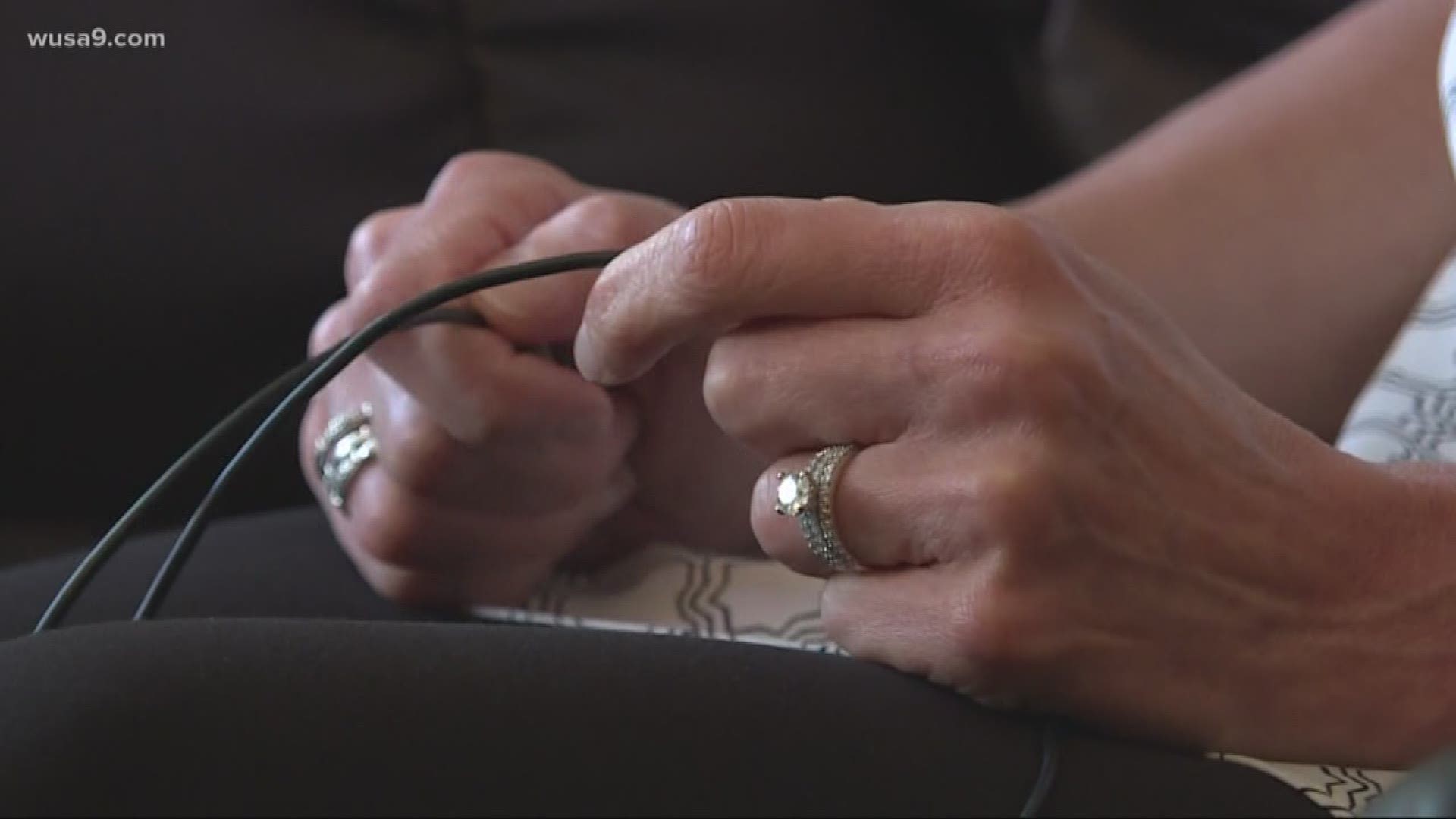ALEXANDRIA, Va. — MaryAlyce Torpy, an Alexandria-based therapist, said many of her patients are skeptical at first of the innovative therapy approach she uses.
"I think I best heard it from a client who said 'I want you to do that black magic thing you do,'" Torpy said.
She specializes in A.R.T., short for Accelerated Resolution Therapy. It's a treatment for those suffering from Post Traumatic Stress Disorder. This therapy uses rapid eye movements to try and replicate the eye movements that occur while dreaming.


In her office, Torpy showed WUSA9 how it works. She erected a light kit, which has a blinking, blue light that moves horizontally. Other therapists choose to use their waving hand, rather than the light. The patient is asked to reflect on traumatic memories, while watching the moving light.
"At a glance it does look ridiculous," she said.
It works though, according to Torpy, who said it has helped hundreds of her clients. The method was first developed in 2008 by a therapist named Laney Rosenzweig.


Since then there have been five research studies, and more than 10 published papers, according to A.R.T. International, which advocates for the technique.
"This treatment provides effective relief from strong physical and emotional reactions associated with PTSD in as few as one to five sessions," the non-profit said in a statement.
Torpy said the main feature at play is something called "bilateral stimulation," described as the horizontal movement by a stimulus, like the light or the waving hand. She said reflecting on a memory, while watching this stimulus can "re-frame the memory," and allow a patient to reflect on a traumatic experience in a different way.


"For you to consciously track the speed of this light, you have to keep in sync other parts of the brain," she said. "Other parts of the brain are feeling the stimulation. So there's a number of other players now in the game. You're not just falling into the memory and re-living it."
The goal of this therapy is to disassociate the negative physical sensations, that are often connected to a traumatic memory. In doing so, Torpy said those "triggers" can be reduced.
"If something falls in the dumpster and the rest of the world goes by and says 'that was an obnoxious noise,'" Torpy said. "But for [a PTSD victim], it sounded like a mortar coming in."
While this therapy is just a decade old, it has ties to a technique created in the late-80's called "Eye Movement Desensitization and Reprocessing." Torpy described the two as "sister modalities," although she said A.R.T offers more guidance from a therapist, and is centrally focused on specific traumatic memories.
The American Psychological Association said that more research is still needed, although they are "generally optimistic" about the new therapy.
"APA encourages individuals to get good care and encourages providers to deliver treatment that has been evaluated for efficacy and safety," they said in a statement. "However, we recognize that innovation in treatments occur and is desirable."


Torpy said the proof is in the number of patients, who have improved drastically in just a few sessions. Serving in the military herself, Torpy wants to spread this technique to other veterans in need.
"You'll always carry these pieces of the war with you," she said. "But instead of having it negatively impact their life, how can I get them back to a new baseline thriving? Not just surviving."

